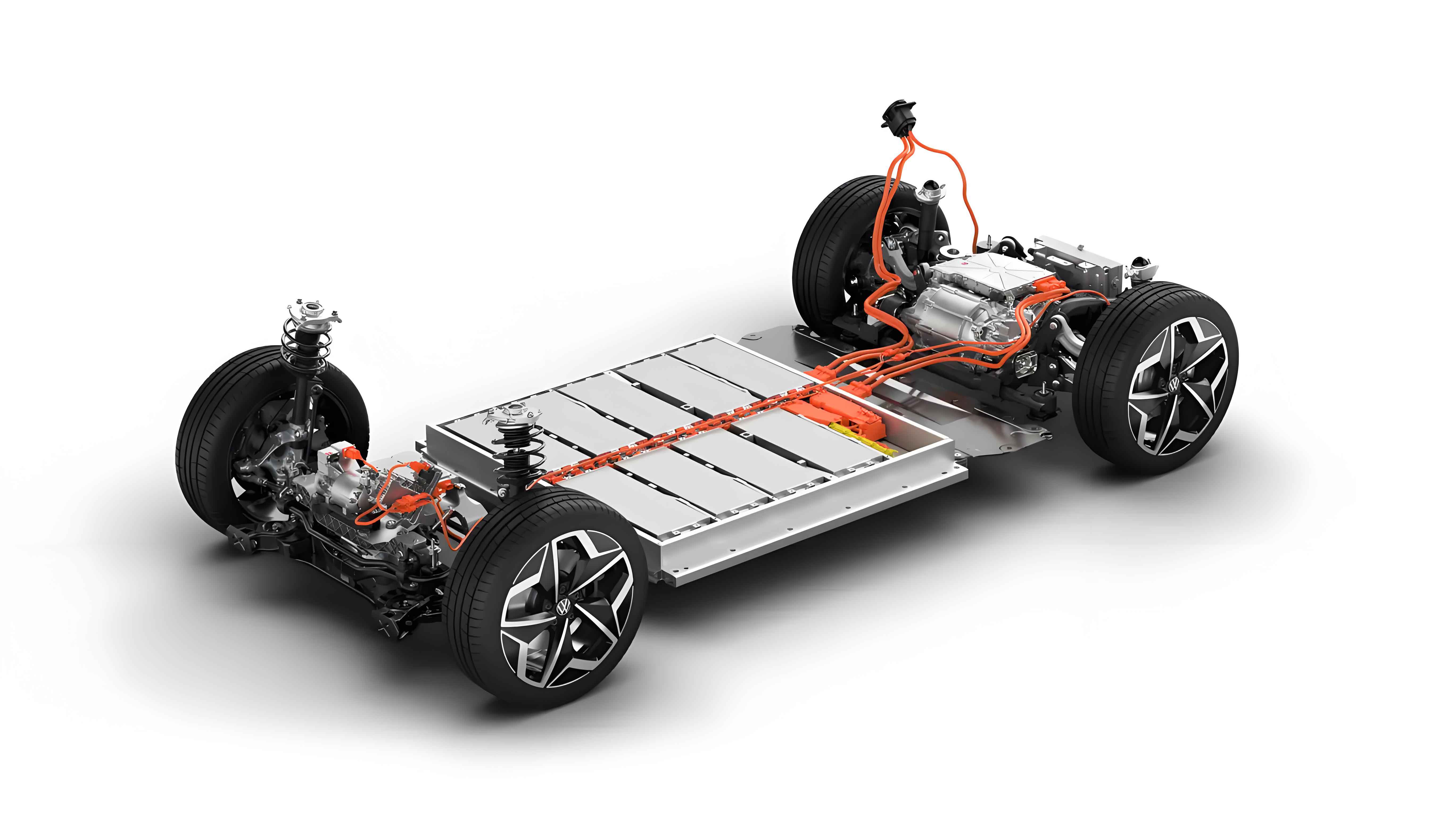Power batteries are at the heart of the electric vehicle revolution, playing a pivotal role in the performance, range, and efficiency of electric vehicles. The manufacturing process of power batteries involves a complex interplay of materials, technologies, and stringent quality control measures to ensure optimal performance and safety. This article delves into the techniques, challenges, and opportunities associated with power battery manufacturing, providing a detailed overview of the current landscape and future prospects.

Techniques in Power Battery Manufacturing
- Material Preparation:
- Cathode Material Synthesis:
- Mixing active materials (e.g., lithium cobalt oxide, nickel manganese cobalt) with conductive additives and binders.
- Techniques include solid-state synthesis, co-precipitation, and sol-gel methods.
- Anode Material Preparation:
- Typically involves graphite, silicon, or lithium titanium oxide.
- Processing includes purification, coating, and sometimes, nanostructuring to enhance performance.
- Cathode Material Synthesis:
- Electrode Manufacturing:
- Slurry Preparation:
- Mixing active materials with solvents and binders to form a homogeneous slurry.
- Coating and Drying:
- Coating the slurry onto a metal foil (copper for anode, aluminum for cathode).
- Drying the coated electrodes to remove solvents.
- Calendaring:
- Compressing the coated electrodes to achieve the desired thickness and density.
- Slurry Preparation:
- Cell Assembly:
- Electrode Cutting:
- Cutting the coated and dried electrodes into specific sizes and shapes.
- Stacking or Winding:
- Assembling electrodes in a stacked or wound configuration, separated by a separator material.
- Electrolyte Filling:
- Introducing the electrolyte into the cell, ensuring even distribution.
- Sealing:
- Hermetically sealing the cell to prevent electrolyte leakage and contamination.
- Electrode Cutting:
- Formation and Aging:
- Initial Charging:
- Charging the cell for the first time to form the solid electrolyte interface (SEI) layer.
- Aging:
- Allowing the cells to rest to stabilize the SEI layer and ensure consistent performance.
- Initial Charging:
- Quality Control and Testing:
- Electrical Testing:
- Assessing capacity, internal resistance, and voltage.
- Safety Testing:
- Conducting tests for thermal stability, mechanical integrity, and overcharge protection.
- Visual Inspection:
- Inspecting for defects such as cracks, misalignments, and impurities.
- Electrical Testing:
Table 1: Key Steps in Power Battery Manufacturing
| Step | Techniques Involved | Key Considerations |
|---|---|---|
| Material Preparation | Synthesis, Purification, Coating | Material purity, Homogeneity |
| Electrode Manufacturing | Slurry Preparation, Coating, Calendaring | Coating uniformity, Thickness control |
| Cell Assembly | Electrode Cutting, Stacking/Winding, Electrolyte Filling, Sealing | Precision, Cleanliness, Safety |
| Formation and Aging | Initial Charging, Aging | SEI formation, Stability |
| Quality Control | Electrical Testing, Safety Testing, Visual Inspection | Performance, Safety, Reliability |
Challenges in Power Battery Manufacturing
- Material Availability and Cost:
- Lithium Supply:
- Limited availability of lithium resources leads to fluctuating prices.
- Cobalt and Nickel:
- Ethical and environmental concerns regarding mining practices.
- High cost and supply chain vulnerabilities.
- Lithium Supply:
- Manufacturing Precision:
- Consistency and Uniformity:
- Ensuring uniform coating thickness and electrode alignment.
- Quality Control:
- Implementing stringent quality checks to prevent defects and ensure safety.
- Consistency and Uniformity:
- Safety and Reliability:
- Thermal Management:
- Preventing overheating and thermal runaway.
- Durability:
- Enhancing the lifespan of power batteries through better material and design.
- Thermal Management:
- Environmental Impact:
- Waste Management:
- Handling manufacturing waste and recycling materials.
- Energy Consumption:
- Reducing the energy footprint of manufacturing processes.
- Waste Management:
Table 2: Challenges in Power Battery Manufacturing
| Challenge | Description | Potential Solutions |
|---|---|---|
| Material Availability | Limited resources, high cost | Recycling, Alternative materials |
| Manufacturing Precision | Consistency in processes, Quality control | Advanced automation, AI-driven quality checks |
| Safety and Reliability | Preventing failures, Ensuring long lifespan | Better materials, Improved designs |
| Environmental Impact | Waste management, Energy consumption | Sustainable practices, Renewable energy integration |
Opportunities in Power Battery Manufacturing
- Technological Advancements:
- Solid-State Batteries:
- Research and development in solid-state technology promise higher energy densities and improved safety.
- Advanced Materials:
- Exploration of new materials such as silicon anodes and cobalt-free cathodes.
- Solid-State Batteries:
- Automation and AI:
- Smart Manufacturing:
- Implementing robotics and automation for precision and efficiency.
- AI and Machine Learning:
- Using AI for predictive maintenance, quality control, and process optimization.
- Smart Manufacturing:
- Sustainability Initiatives:
- Recycling Programs:
- Developing efficient recycling methods to reclaim valuable materials.
- Green Manufacturing:
- Reducing carbon footprint through energy-efficient processes and renewable energy use.
- Recycling Programs:
- Market Expansion:
- Growing EV Market:
- Increasing demand for electric vehicles driving growth in power battery manufacturing.
- Grid Storage Solutions:
- Expanding applications of power batteries in renewable energy storage.
- Growing EV Market:
Table 3: Opportunities in Power Battery Manufacturing
| Opportunity | Description | Impact |
|---|---|---|
| Technological Advancements | Development of solid-state batteries, New materials | Higher energy density, Improved safety |
| Automation and AI | Smart manufacturing, AI-driven processes | Increased efficiency, Reduced defects |
| Sustainability Initiatives | Recycling, Green manufacturing | Lower environmental impact, Sustainable growth |
| Market Expansion | Growing EV demand, Energy storage applications | Market growth, Increased adoption |
Conclusion
The manufacturing of power batteries for electric vehicles involves sophisticated techniques and faces numerous challenges, from material availability to ensuring safety and reliability. However, these challenges also present significant opportunities for innovation and growth. Technological advancements, automation, sustainability initiatives, and market expansion are key drivers that will shape the future of power battery manufacturing. As the demand for electric vehicles continues to rise, the industry must adapt and evolve, embracing new technologies and practices to meet the growing needs of a sustainable and energy-efficient future.
